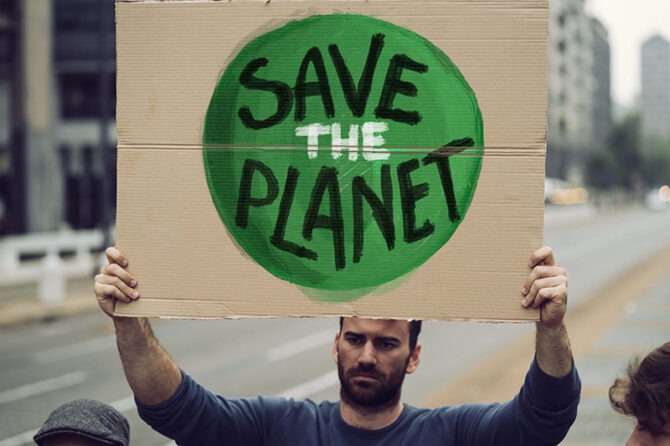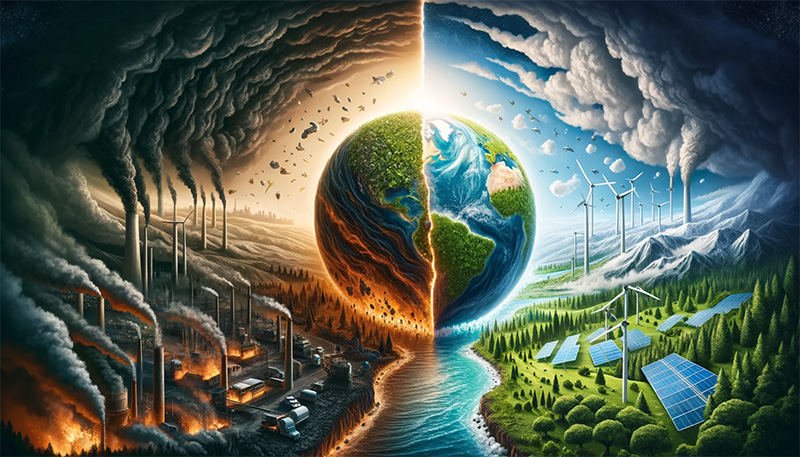
The Earth, our home, now sings a dissonant tune under the growing strain of global warming. A seemingly modest increase of 2°F (1°C) in average global temperature belies a far more complex and destructive symphony, orchestrated by human activity. The Intergovernmental Panel on Climate Change (IPCC) forecasts a daunting future, predicting temperature rises between 2.1–3.5°C, far surpassing the thresholds set by the Paris Agreement. This is not just a statistic; it’s a force reshaping our world and future.
Melting Glaciers: The First Violins of Catastrophe
The melting glaciers and ice sheets, akin to the first violins in an orchestra, play a pivotal role in this symphony. Driven by a warming atmosphere, their retreat is more than a mere scenic alteration. By 2150, sea levels are projected to rise by up to 3.9 meters (13 feet), threatening coastlines, displacing millions, and undermining the foundations of coastal communities. This rise in sea levels poses risks not only to infrastructure and livelihoods but also to cultural heritage and ancestral lands.
Storms and Heatwaves: The Woodwinds and Brass of Turmoil
The intensifying storms, the woodwinds of this symphony, howl with a frequency and ferocity previously unseen. The brass section, represented by scorching heatwaves, extends its reach, drying lands and testing human resilience. Extreme precipitation events, like percussive interludes, unleash floods that reshape landscapes and devastate communities. This erratic dance of weather patterns disrupts ecosystems, destabilizes agricultural cycles, and endangers food security for millions.
Biodiversity Loss: The Choral Voices of Extinction
Approximately 14% of terrestrial species face extinction due to global warming. Ecosystems unravel as habitats shift and food sources dwindle. Polar bears, stranded on diminishing ice, exemplify the loss of homes and habitats. Coral reefs, once vibrant underwater choruses, bleach and wither in acidifying oceans. The symphony thus morphs into a dirge, marking the loss of biodiversity and the potential collapse of ecosystems.
Tipping Points: The Ominous Bass Notes
Perhaps the most alarming elements are the potential tipping points – massive forest loss, the collapse of ice sheets, or a sudden change in ocean circulation. These phenomena, the ominous bass notes in the background, hold the potential to accelerate global chaos, underscoring the planet’s fragility.
A Counterpoint of Hope
Yet, in this cacophony of despair, a melody of hope emerges. The collective voices demanding action, the relentless work of scientists and activists, and the growth of the renewable energy sector play a counterpoint to the despair. This new tune is one of innovation, international cooperation, and a shared vision for a liveable future.

The Choice: Symphony of Destruction or Chorus of Hope
Humanity stands at a crossroads, facing a critical decision that will determine the future of our planet. The path before us is starkly bifurcated, presenting two contrasting trajectories: we can either continue to fuel the symphony of destruction or we can decisively join the chorus of hope.
Fuelling the Symphony of Destruction
The symphony of destruction is an all-too-familiar tune, played out through relentless fossil fuel consumption, deforestation, and unsustainable practices. It’s a path marked by a relentless increase in greenhouse gas emissions, leading to exacerbated global warming. If continued, this path will see the Earth’s temperature soaring to levels catastrophic for all forms of life. The ecological imbalance caused by such actions threatens to unleash unprecedented natural disasters, further loss of biodiversity, and widespread human suffering. The relentless pursuit of short-term economic gains over long-term sustainability has so far been the predominant theme of this symphony, leading to environmental degradation at an alarming rate.
Joining the Chorus of Hope
On the other hand, the chorus of hope sings a tune of resilience, sustainability, and innovation. This path involves a decisive shift towards renewable energy sources, such as solar, wind, and hydroelectric power, which are crucial to reduce our carbon footprint. Embracing renewable energy not only mitigates the effects of climate change but also heralds a new era of clean, sustainable power that can drive future economic growth.
Protecting and restoring forests is another critical measure in this chorus. Forests act as carbon sinks, absorbing CO2 from the atmosphere, and play a vital role in preserving biodiversity. Initiatives like reforestation and afforestation, coupled with sustainable forestry practices, are vital in maintaining ecological balance.
Sustainable practices in agriculture, industry, and daily life form the harmony of this chorus. This includes embracing circular economies, where waste is minimized and materials are reused and recycled. Sustainable farming practices, water conservation, and reduction in consumption are also key notes in this melody.
Adapting to the changing climate and building resilience, especially in vulnerable communities, is an imperative verse in this chorus. This involves developing infrastructure and systems resilient to extreme weather events and rising sea levels, and ensuring that communities, particularly those most at risk, have the resources and knowledge to adapt to changing environmental conditions.
The Need for Action
Apathy and inaction are luxuries we can no longer afford. The time for debate and delay has passed; the time for action is now. Every individual, community, corporation, and government has a role to play in this chorus of hope. It involves making conscious choices, advocating for policy changes, investing in sustainable technologies, and educating the younger generation about the importance of environmental stewardship.
As we face this existential choice between the symphony of destruction and the chorus of hope, our actions today will echo through generations. The notes we choose to play and the melodies we decide to sing will determine the kind of world we leave for our children. The choice is clear, and the responsibility lies with us all. Let us choose the chorus of hope and work towards a harmonious and sustainable future for our planet.
The Call for Action
This is a battle not just for polar bears or coral reefs, but for humanity itself. We stand at a crossroads, where the future of a vibrant Earth hangs in balance. Will we be remembered as the generation that succumbed to the symphony of destruction, or as the one that silenced it with harmonious action? The choice is ours, and the time to act is now.
Prof. Dr. Prahlada N. B
18 December 2023
Chitradurga.

















Leave a reply